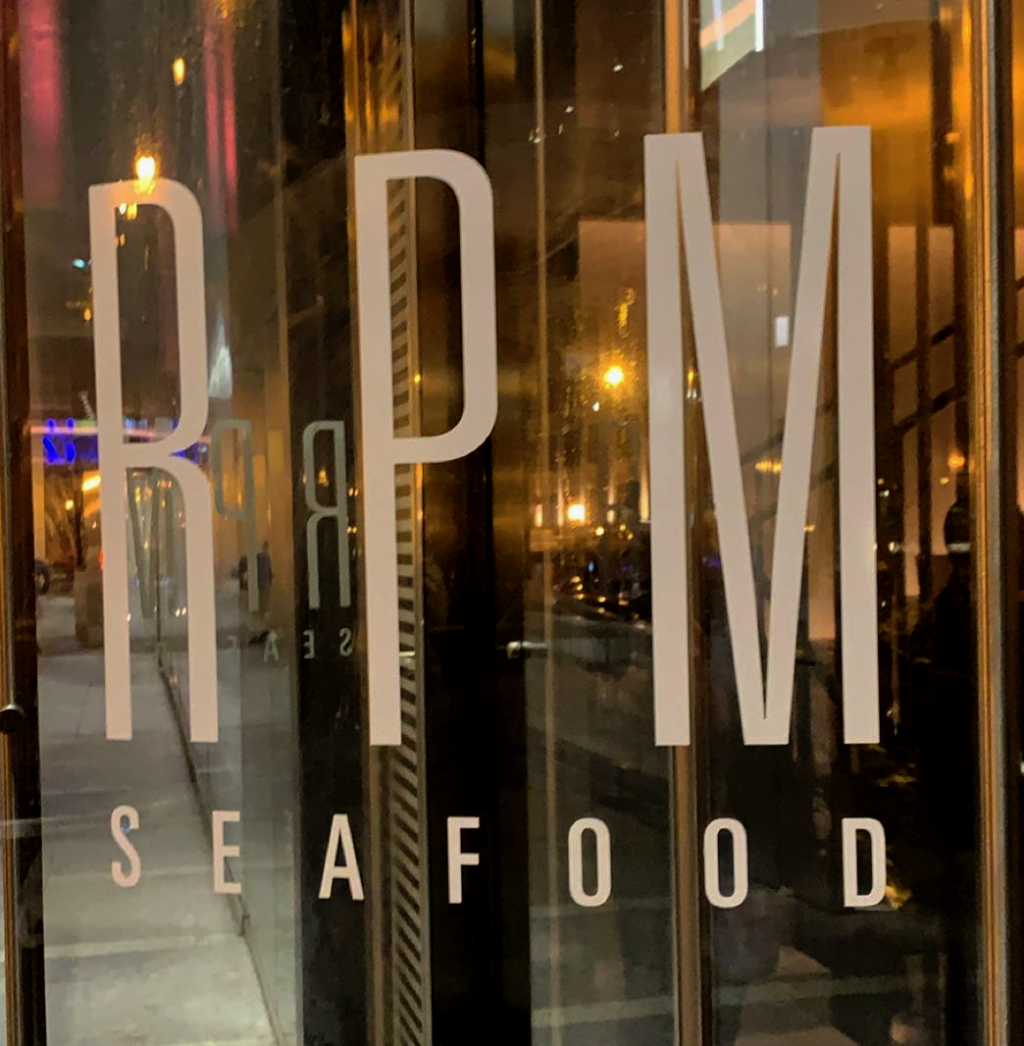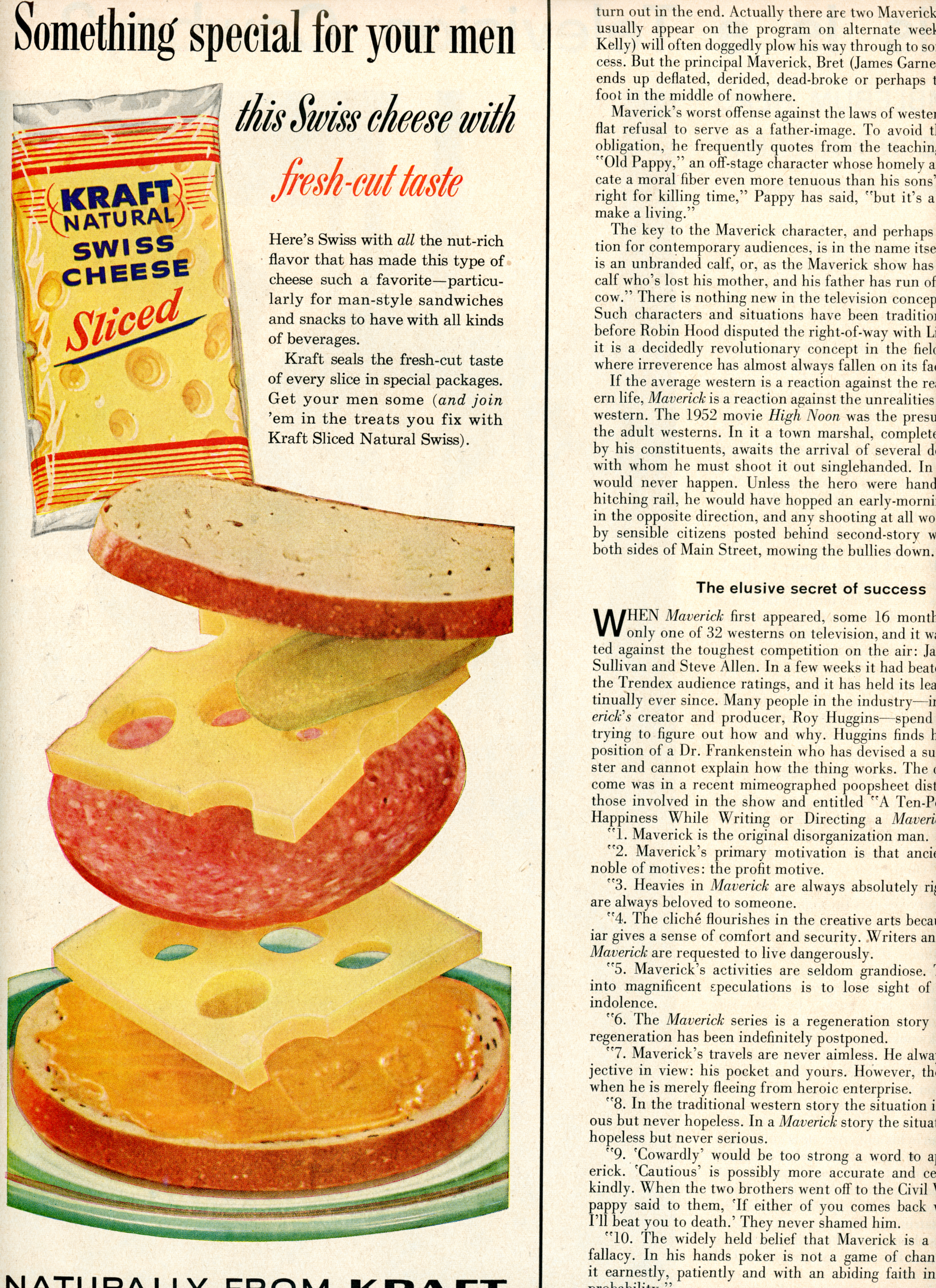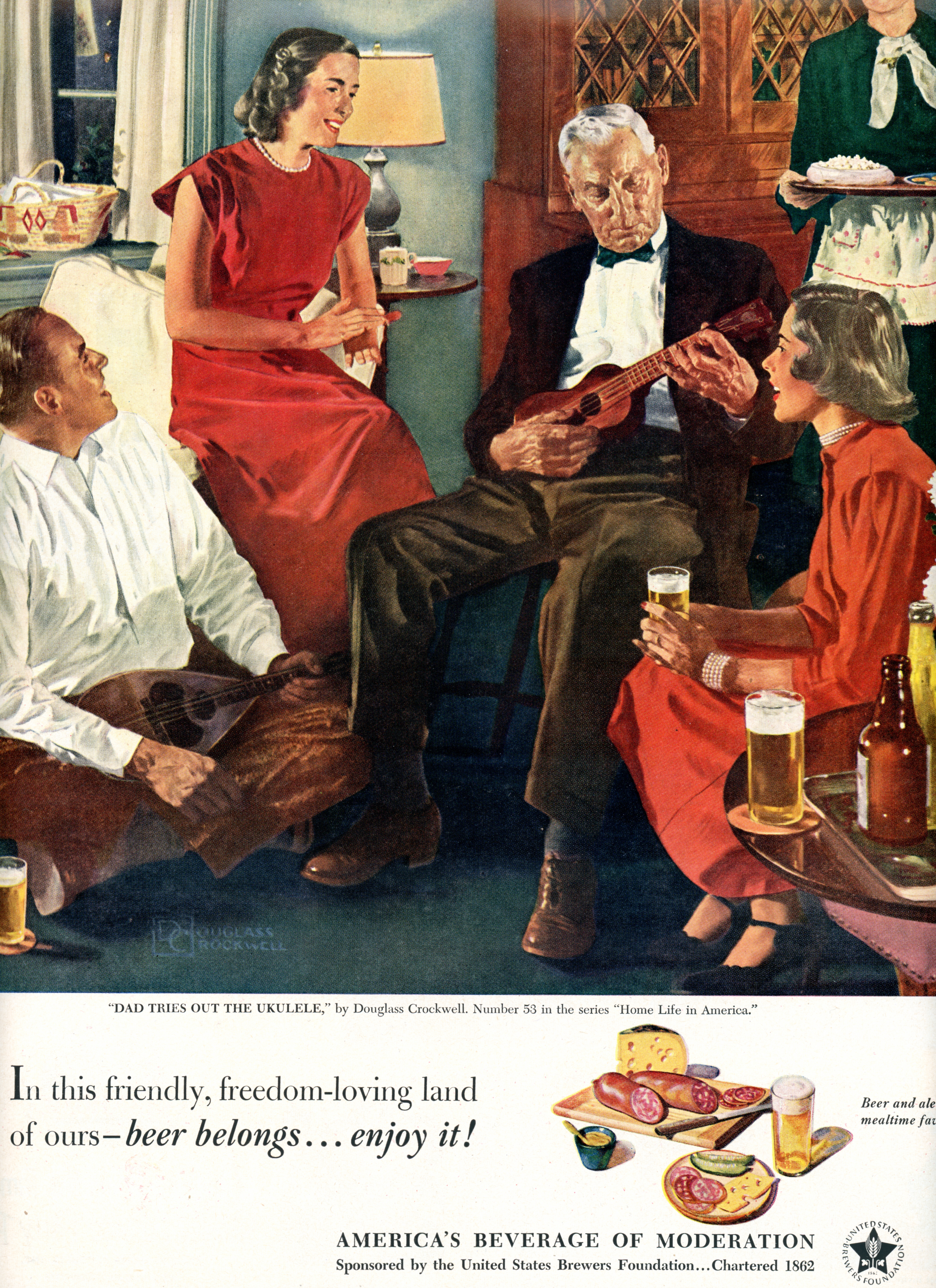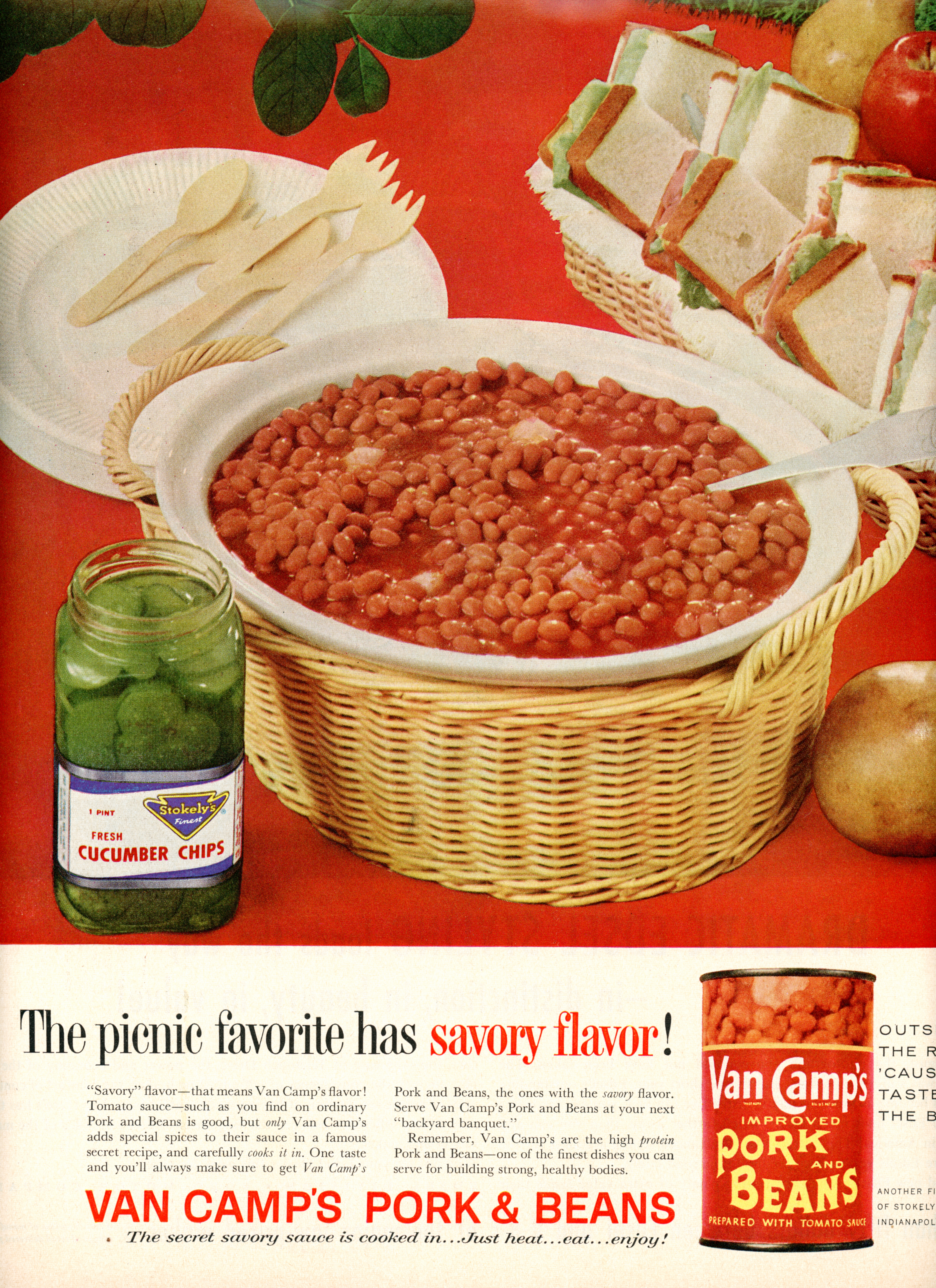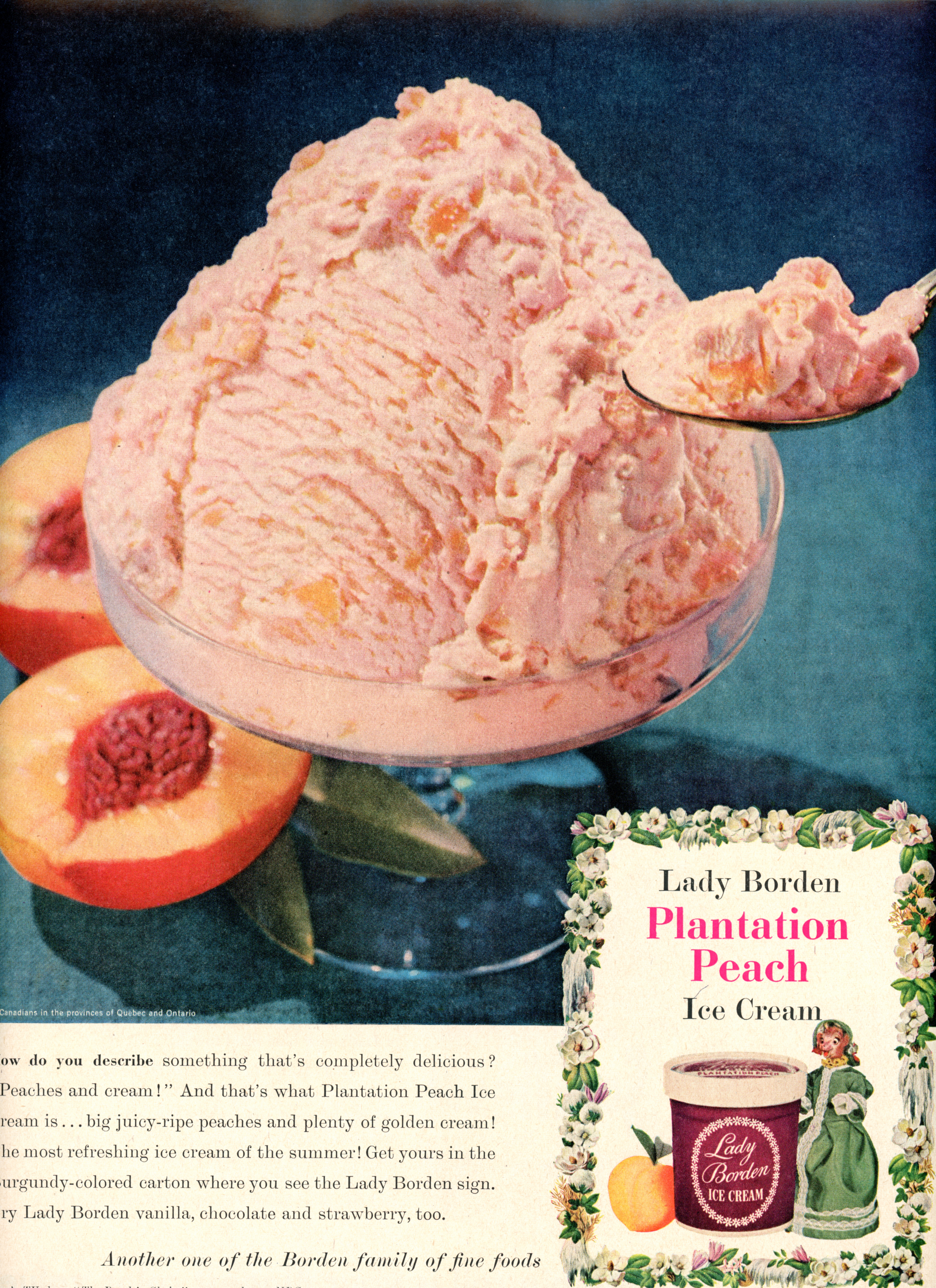RPM Seafood is the long-awaited third concept in Lettuce Entertain You’s chain of high-end RPM eateries, which includes RPM Steak and RPM Italian in River North as well as an RPM Italian location in Washington DC. When you reviewed RPM Steak (which opened two years after “Italian” in 2014) last year, you paid special attention to the seafood on offer and said, rather unambiguously, that Bavette’s has RPM beat both in terms of beef quality and, more especially, in the quality of their king crab and shrimp. While comparing the quality of the oysters at the two restaurant was a wash, RPM Steak could claim to serve better lobster as well as a more pleasing selection of desserts. Otherwise, the crown jewel of the LEYE empire is just too middle-of-the-road, aiming to please throngs of socialites and an expense account crowd for whom dining is a matter of style more than substance. The service, while competent, did not surpass expectations, and you wondered whether RPM Seafood’s claim of featuring “the truest expression of the world’s best fish and seafood” would amount to anything more than window dressing for another quasi-steakhouse concept.
Throwing yet another wrench into the gears of the new property, youlearned last fall that RPM Seafood would be without its “P.” While the “R” in“RPM” stands for Rancic (Chicago’s closest thing to a “celebrity couple”) andthe “M” for Melman (the esteemed family who owns LEYE), the “P” once stood forDoug Psaltis. Psaltis worked for chefs like David Bouley, Alain Ducasse, andThomas Keller—earning stars from both Michelin and The New York Times—duringhis time in the Big Apple. Upon being lured to Chicago, he would open Bub City,Paris Club, Three Dots and a Dash, Il Porcellino, and Ramen-san for theMelman’s restaurant group. He also founded the annual Windy City Smokeout (alsoput on by Lettuce Entertain You), but, clearly, the RPM restaurants were home.Psaltis is said to have used his experience in top kitchens to draw bettertalent to Chicago and keep the city at pace with vapid coastal trends (likepricy Japanese beef). To his credit, Psaltis never, you think, had much of acelebrity chef “presence.” Nonetheless, the chef/partner was accused ofverbally accosting and assaulting one of his employees at RPM Steak and quicklyshown the door with a sterile, terse statement in early November of last year.
Truth be told, while the Chicago of 2012 (when RPM Italian opened) or2014 (when RPM Steak opened) may have needed inspiration from without, the RPMrestaurants haven’t exactly reinvented the wheel. Their opening menus werestrong, and they’ve stuck to those strengths without much dynamism orexcitement. They’re “institutional,” “establishment” restaurants now wherepatrons might very well order the same dish each time and expect it to arriveunmolested, unchanged by time, no matter what might be fashionable elsewhere.Thus, in that respect, Psaltis’s departure could have been a blessing: not justfor those colleagues forced to endure abuse, but for diners eagerly awaiting a burstof new blood and creativity that might build on the foundations the former chefhad set during the course of nearly a decade here.
Nominally, then, RPM Seafood has its “R” and its “M” but no more “P.”Leading the kitchen, instead, is Bob Broskey. His is a name you were unfamiliarwith, but the 2015 Zagat “30 Under 30” Award winner (an award you loathe toreference) was chef de cuisine of L2O under Matthew Kirkley, then the executivechef of Intro, and—most recently—the executive chef of Beacon Tavern. These arerather impressive credentials for a chef of Broskey’s age, and you firmlybelieve that L2O—in its first iteration—set a high standard for seafood inChicago that has never again been matched. Could “RPM” become “RBM” one day?The chef is clearly young and talented enough to put his stamp on therestaurant—but will LEYE let him? Given the circumstances surrounding Psaltis’sdeparture, you think Broskey’s first job is to “right the ship” and oversee asmooth opening. RPM Italian and RPM Steak were never exactly hotbeds ofculinary innovation, but the breadth of the seafood category and the chef’sexperience within the group might someday enable him to express himself throughthe “RPM” format.
The truth is, while that “P” originally signified a chef, it was nomore than a piece of trivia. (There’s only room for one “celebrity” when theRPMs are concerned, and it’s sure as hell not going to be the chef!) Therestaurants, rather, have the institutional feel of a well-oiled hospitalitymachine. Ultimately, the star of RPM Seafood’s opening is the massivefour-floor renovation LEYE undertook to revivify Chicago’s Riverwalk. It beganwith the opening of Pizzeria Portofino— the dockside spot with spritzes galoreand a “marina” menu—on the “ground floor” last summer. One floor above that isRPM On the Water—LEYE’s private events space extraordinaire where theycan finally host weddings, banquets, and special events (like a St. Patrick’sDay fête) overlooking the Loop. At street level (well, just a few steps aboveit), you will find the entrance to RPM Seafood proper. That third floor is hometo the main bar, the main dining room, and the kitchen. Finally, the fourthfloor contains a lounge space overlooking the bar, as well as additional spacefor private events or larger parties at the restaurant itself. Building afour-floor riverfront restaurant into the bottom of an existing skyscraper musthave taken a herculean effort, but it’s no surprise the city came on board. TheRiverwalk is criminally underdeveloped, and there’s no better opening to formthe lynchpin of a new dining and commercial district downtown.
You have visited RPM Seafood three times since its opening about threeweeks ago, taking consistent notes. Thus, as is customary, you will condensethe totality of your experiences into one, all-encompassing narrative. Then,let us begin. You think it was on the Monday or Tuesday of opening week thatyou visited the OpenTable site and saw a new restaurant—RPM Seafood—hadsomething like 1,200 bookings made in one day. Of course, you had been trackingthe development of the restaurant’s website, had signed up for the newsletter,and had been keeping tabs on their social media. The e-mail blast announcingthat reservations were open would not arrive for another day, and you countyourself lucky to have made a half dozen or so reservations (spanning monthsinto the future) at that time. Could LEYE have handled this better? It is hardto think of a system that fairly accommodates such a mass of otherwise indistinguishablecustomers. (There’s Tock, of course, but you find that site better suitedtowards securing bookings on a specific date rather than at a restaurantin general). You are sure that the company’s own VIPs were taken careof, and, barring that, it’s perhaps best to let dumb luck and word of mouthdrive the first, frantic rush for reservations.
That being said, you did have a spring in your step as you strodethrough the revolving door that first Saturday of service. Chicago simply doesnot have many openings like this, or perhaps many restaurants at all which are “fashionable”for the fashionable types and still relevant for those who areculinarily-inclined. Upon entering, you find yourself face to face with thehost’s stand, a set of stairs lying to your left and the entirety of the barand dining room stretched before you. There’s not much room to linger, so keepyour eyes peeled for a bar stool if the rest of your party is running behind.On that first visit, as is typical of openings, the restaurant was runningabout 30 minutes behind. You do not think the delay was particularlywell-assuaged by the staff, but you knew that other parties would happily takeyour table and, thus, bit your tongue. On subsequent visits (with reservationscloser to the beginning of service), you were told to wait for the rest of yourparty at the bar. This incensed you, as it always does. You went on to wastefive minutes at the bar ordering a $20 dark ‘n’ stormy only to be seatedimmediately thereafter. Those are five minutes that could have been spentbrowsing the wine list at the table and getting bottles prepared prior to theothers’ arrival (which, ultimately, would allow the restaurant to turn thetable more quickly). Thankfully, on your most recent visit (and with some showof recognition from the host), you were immediately seated.
The dining room—which features the usual RPM tones of light and darkwood offset by off-white chairs and walls—is split into two zones. The first,which borders the far end of the bar, is set up as a 4×4 grid of four-tops withbooth seating butting up against the northern and eastern walls (allowingguests to peer southward towards the river). Behind the set of booths at thefar (eastern) end of the front dining room, a couple steps lead up to thesecond space: a 3×4 grid of four-tops with booths running along the same walls.You have come to prefer being sat in the latter area due to its slightly betterview of the Clark Street Bridge. You also find it to be a bit more quietcompared to the area closest to the bar. However, in truth, there is little differencebetween the dining rooms. What matters more, you think, is how close one sitsto the south-facing windows (should taking in the view be important).Otherwise, the tables are spaced similarly in both zones, and any parties oftwo are simply seated at four-tops (booth or not). Aesthetically, there is notmuch more going on. The space features some artificial trees and hangingfoliage (as can be seen at Pizzeria Portofino and Aba), which merely functionto break up the neutral tones. The younger generation of Melmans seems quitefond of these fake plants as a sort of decorative panacea, and they look fineso long as one is unaware of its repetition throughout the latest LEYEproperties. As impressive as the building project itself was, RPM Seafood won’tbe winning any design awards. However, the elements are all understated enoughto ensure the view is the “star” (and, perhaps, that’s the point).
Having been seated, you now turn your attention to the menus,beginning with beverages. While you rued ordering that dark ‘n’ stormy at thebar, it did taste quite good, combining rum, ginger, and falernum (a lime,almond, and allspice syrup from the Caribbean). The cocktail selection, ingeneral, errs towards the tropical and refreshing (as any seafood-focusedrestaurant should). You have yet to try any others, but diners can expect afull range of spirits paired with fruits like lemon, grapefruit, pineapple,raspberry, or watermelon. The “Weston” (a blend of bourbon and espressoflavored with pipe tobacco) is the one exception, but the bar can surely puttogether any other classic cocktail that is requested.
The wines by-the-glass feature some 28 different selections rangingfrom $11 to $45. For example, in the sparkling section, patrons can sip on a$12 prosecco, a $15 sparkling rosé, a $29 non-vintage Champagne, or a $38 ’06vintage Champagne. Likewise, the white wines range from riesling, Rías Baixas,chenin blanc, and sauvignon blanc (for $12-$19 a glass) to Chablis and Napachardonnay (at $21-$22) and, finally, a 2013 Corton-Charlemagne (at thateye-popping $45). At least they’re not using a Coravin! The reds, surprisingly,all stay below $30 and feature a mix of pinot noir and cabernet sauvignon withoddballs like Barbaresco, Saumur, Saint-Joseph, and Haut-Médoc thrown in forgood measure. As a white wine drinker, the by-the-glass selection is superb inits diversity. The full wine list is even better. Though it is no longeravailable online (upsettingly), you had the chance to pour over it extensively.While the other RPMs are rightfully focused on red wine, LEYE’s seafood concepthas provided the group an opportunity to feature the most expansive selectionof rare and allocated white wines in Chicago. At long last, you may imbibebottles from Dagueneau, Miani, Keller, Raveneau, Dauvissat, Lafon, Roulot, andCoche-Dury all in one place. There are plenty of champagne selections—plenty ofmagnums too—and, yes, the red wines being offered are nothing to sneeze ateither. There’s plenty of value on the list—like the Hubert Lamy wines—too. Simplyput, RPM Seafood is a wonderland for white wine drinkers, and you have alreadyordered bottles at the restaurant you are unlikely to ever find again.

After just a couple minutes browsing the wine list, the server appears.They bid your party welcome, ask which type of water you’d prefer, and feel outany potential drink orders. As at the other RPM properties, the staff is cladin white jackets, lending them a crisp, professional, “classic Chicago” look.All this without devolving into the hulking brutes that work at Gibsons (youkid). The servers’ bedside manner lacks some of the easygoing charm of a placelike Bavette’s, but they do transmit warmth and recognize repeat patrons. Thatbeing said—and this is particularly true during the first months ofopening—it’s “all hands on deck” at RPM Seafood. The focus, as it has alwaysbeen at these properties, is on giving each party a well-paced, precise, andenjoyable experience rather than reinvent the wheel hospitality-wise. There aretoo many tables filled with too many “important” people to linger or inject toomuch of one’s own personality into the service. To say that the service isconsciously “faceless” is not an insult, for it means that LEYE has found a setof best practices that can be applied across just about any party successfully.You do think the service is expertly executed; it’s just not memorable unlessone is used to being let down by steakhouse staff. If that is the case then,surely, you can be glad that the team at RPM Seafood will transcribeyour order properly, deliver the dishes in a timely manner, and avoid makingyou feel rushed (despite the restaurant’s popularity).
With the beverage order settled, you can now turn to the real “meat”of the menu—the promise of the “truest expression of the world’s best fish andseafood.” At this point, you have tried about half of the items on the menu,having ignored the meat options altogether (that’s what RPM Steak is for, no?).Thus, you will proceed category-by-category, speaking to your past experiencesand surmising what any unsampled dishes may promise other customers. Nestledinto the upper left corner of the menu is a selection of three crudos andtwo tartares. The former category features tuna (prepared as a Niçoise saladinspired carpaccio), salmon (citrus-cured with Thai vinaigrette), and Japanesehamachi (or yellowtail, served with ponzu, salmon roe, and crispy garlic).While some of these fish—like the tuna and hamachi—are offered at RPM Steak,the accompanying flavors, to the restaurant’s credit, are totally different.Still, in a post-omakase “boom” Chicago, such crudo preparations simply cannothold a candle to what esteemed chefs like Otto Phan do night after night withraw fish. They’re pleasant enough dishes, but LEYE has not sourced any fishthat’s truly superlative. Given the (standard) portion size for crudo, mostdiners would be happier (and better served) putting their money towards othersections of the menu.
You have not tried the tartares firsthand but appreciate how RPMSeafood’s “grassfed steak tartare” (with truffle toast and capers)distinguishes itself from the “hand cut steak tartare” (with blue cheese toastand quail egg) at the steakhouse. For, if you insist on eating raw beef at aseafood restaurant, the flavor profile should indeed display at least somepassing resemblance to the environment. Lastly, the tomato tartare (withwatercress, soubise, and basil) reminds you of Momotaro. You haven’t tried itbut can only assume the same textural trickery is afoot. This is the sort ofdish that needs to prove it doesn’t belong under the “salad” category, the sortof dish that should not simply be a concession towards vegetarians (not vegans,for soubise has a béchamel base). To that point, you’re actually motivated totry the tomato tartare next time, as the restaurant cannot afford to havecustomers start their meal with something simple like this that does notimpress.
Directly below the “crudo & tartare” selection (but above one ofthe lines that trisects the menu into separate, broad categories) are the“seafood cocktails.” Here, you can order shrimp ($5 per piece), king crab ($30per half pound), and lobster ($30 for half, $60 for whole) for prices that areright in line with those at the other RPMs. Adjacent to these cocktails arelisted the two varieties of “chilled oysters,” a “rotating selection” from theEast Coast and the “RPM Prestige” oyster cultivated in Lilliwaup, Washington bythe Harna Harna Company. Both cost $18 per half dozen and come served with ayuzu granita instead of the typical mignonette. Just above the “chilledoysters,” a bordered box highlights RPM Seafood’s “seafood towers,” anassortment of prawns, lobster, king crab, and both oysters available in bothpetite ($90) and grand ($180). By comparison, RPM Steak’s seafood “platter”comes in just one size (“grand”) and is priced at $165. Both Seafood andSteak’s towers generally share the same proportions (one dozen oysters, onehalf pound of king crab, one pound of lobster, and a handful of shrimp).However, you think the difference in price can be explained.
You see, while RPM Steak serves “colossal” tiger prawns, RPM Seafoodprefers “shrimp” (which, of course, are simply smaller prawns). Both menus usethe terms “prawn” and “shrimp” interchangeably, but—suffice it to say—customersreceive a greater quantity of smaller, sweeter shrimp at RPM Seafood comparedto the rubbery monstrosities served at RPM Steak (which you have criticizedbefore). The oysters from both coasts—plump, pristine, andperfectly-shucked—seem to taste better at RPM Seafood as well, with the yuzugranita easily besting the jalapeño and cucumber topping used on Steak’splatter. The king crab and lobster remain at about the same quality in bothestablishments; that is, you think Bavette’s king crab easily beats anythingLEYE can source but still find the quality of their lobster to be admirable(and perhaps the city’s best).
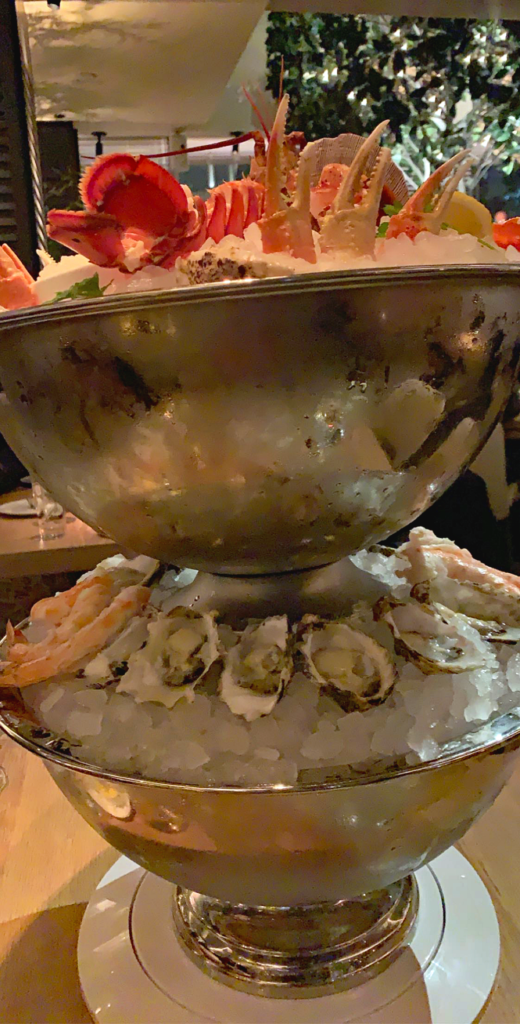
In some sense, this tower represents a signature item for therestaurant. That being said, its presentation is identical to the “platters”served at RPM Steak. Sure, it’s a neat enough way to offer customers a mountainof shellfish. The lazy Susan style swivel at its base (also seen at RPM Steak)is a real innovation that improves the manner in which such a large set piecegets eaten. But, at a certain point, seafood sourcing hits a ceiling andthere’s simply no greater flavor that can be attained (that is, without somehowovershadowing the “meat”). RPM Steak already hit that ceiling, and RPMSeafood—save for some marginally better shrimp and oysters—does little tosurpass it. You would still recommend either the petite or grand tower forcertain parties. You, surely, will end up ordering it again. But patronsalready skeptical of the price point are better served saving their money forsome of the menu’s more distinct offerings.
Above that bordered box advertising the “seafood towers,” at thetopmost midpoint of the menu, are the “bread service” and “spreads” sections.The former features two or three loaves at a given time like Parker Houserolls, a “cheese-baked” focaccia, and a sesame baguette. You have tried theParker House rolls a couple times with great pleasure. They are ethereallylight, fluffy, buttery, and made all the better via the bite of poppy seeds,sesame seeds, garlic, onion, and salt in the “everything bagel” seasoning whichadorns their tops. Given the historic Parker House Hotel’s location in Boston,you think this bread is particularly well-suited to a seafood setting. Theadded reference to lox and bagels is a playful, subtle twist on the classicrecipe. While the focaccia, you think, was discontinued from the original menu,you did have the chance to try the baguette. It’s thinner and crispier thanmost you will find in this city—that is to say, it is better made. Theincorporation of sesame into the dough adds an enjoyable depth of flavor(without being too forceful, as whole wheat might be). You would suggestenjoying the Parker House rolls during the cold portion of the meal—owing totheir softness—and letting the baguette play off of heartier fare like the warmappetizers and pastas. Of course, there are the spreads: a warm brandade (madefrom salt cod, olive oil, and potatoes) and a salmon rillettes. Though both areveritable classics (as far as fish-based spreads are concerned), they have notcaught your eye yet. It’s just too tempting to devote one’s bread to moppingthe sauce up off of plates.
RPM Seafood’s salad selection might be the most bare of all categorieson the menu. There’s a “classic Caesar” (featuring aged Parmigiano andanchovy), a “Greek tomato salad” (with feta and olives), an “RPM chopped”(featuring green beans and avocado), and a “Simple Bibb lettuce” (with freshherbs and a vinaigrette). Surprisingly, one does not find the same Caesar saladat RPM Italian or RPM Steak. One does not find the chopped salad at thesteakhouse either. Only that “simple” Bibb salad finds its doppelganger in the“soft” Bibb lettuce salad offered at RPM Steak (and also featuring fresh herbsas well as a vinaigrette). You have only tried the Greek salad and found itserviceable. You think, strangely enough, that the tomato salad at Aba blows itcompletely “out of the water” (pun not intended). Nonetheless, you do thinkthese salads are well-priced and well-sized to either be eaten as one’smidcourse or shared with the table. The “classic Caesar,” much to its credit,features a lone crouton “twinkie” you last spied at LEYE’s now-defunct BoothOne / Pump Room revamp. You believe Graham Elliot is credited with the recipe,and it’s nice to see a contemporary classic being preserved within the city.
“Warm bites” form the last category of the menu’s appetizer section—andthey might just be, pound-for-pound, the best of all of RPM Seafood’s dishes. First,there are the “Prawns in Olive Oil,” a plate featuring four of those sameshrimp from the cold seafood section that are cut in half, cooked to a blushred, and served with petite basil, lemon, and that titular olive oil. At $16,it’s a small plate, but you actually get cost savings relative to the $5 pershrimp rate in the cold section. The crustaceans, too, taste just as plump whenserved warm and possess an added undercurrent of sweetness owed to theenveloping richness of the olive oil and the cut of the lemon.
The second of five “warm bites” is a $15 serving of truffle scrambledeggs. “Fifteen dollars,” you thought to yourself upon first seeing this dish onthe menu, “just how many shreds of truffle—or worse, drops of truffle oil—doesone get at such a cut-rate price?” The answer: customers receive four to fivefull bisections of a small-to-medium-sized Tuber melanosporum (that is,the black Périgord truffle) over a puddle of soft-scrambled eggs endowed withplenty of chives. Now, you often turn your nose up at dishes which seek todeliver a small dose of a “luxury” ingredient to those who would otherwise beunable to try it. Not that you don’t wish to “share the love,” but such dishesoften bastardize the ingredient, confuse customers as to that ingredient’sactual merit, and cheat those same customers out of a lot or a little money forthe pleasure. However, RPM Seafood’s truffled eggs are well-priced, fairlyportioned, and portray black truffles at their best by ensuring the subtlety ofits aroma, texture, and flavor is not overshadowed. You think this dish is anice bonus item—have everyone at the table get it (in lieu of a salad)! Itrepresents LEYE using their economy of scale to indulge the customer, and youwill eagerly await white truffle season to scope out this same dish’s pricing.
Next in line is the “peekytoe crab de Jonghe,” an ode to one ofChicago’s unabashed classic dishes: the Shrimp de Jonghe. The preparation—whichcomes from the former De Jonghe Hotel on Monroe Street—is dated to the late 19thcentury and features shrimp that is boiled then baked with a mixture of meltedbutter, sherry, garlic, shallots, parsley, and breadcrumbs until golden brown. RPMSeafood’s variant adds espelette pepper for a mild dose of heat but, otherwise,all the constituent elements are there. Patrons receive a bowl replete withlump crab meat, garlic butter, chives, and crispy breadcrumbs. The accompanyingwedge of lemon helps cut through some of the richness as customers spoon theconcoction onto crostini. The end result is a sort of “perfect” butterycrab bite that brings together herbs, peppers, acid, and additional texture toaccentuate the sweeter meat of a smaller crab. As far as you are concerned, whoneeds the brandade or salmon rillette spreads when this is on the menu?
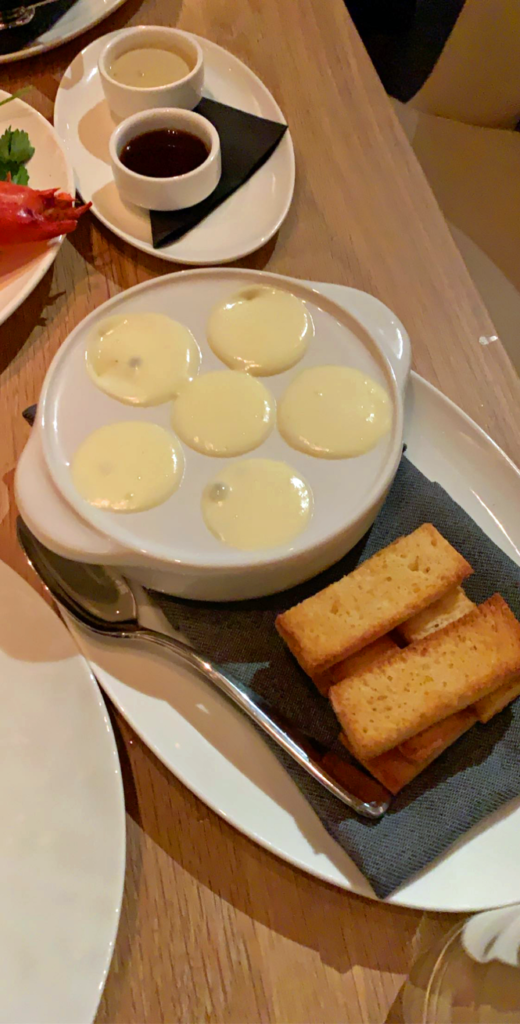
The “bay scallop escargot-style” is another winner that underlinesjust how imaginatively the kitchen approaches the blank canvas of fresh,well-sourced seafood. In this dish, the bite-sized scallops are tucked into aclassic ceramic escargot bowl (as one might, perhaps, see at LEYE’s Mon AmiGabi) with an airy, not-overly-decadent lemon Hollandaise. This sauce does agood job letting the soft chew of the scallops shine, as a thicker, moretraditional Hollandaise would stand up to a snail but overshadow the mollusks.Like the crab de Jonghe that came before it, this dish features a handful ofcrostini to sop up its constituents. Their added crunch provides the perfectcontrast to the smoother textures being offered, and thearrangement—overall—looks shareable, accessible, and fun. This is a classy,imaginative dish that gets to the heart of what RPM Seafood—at its best—shouldoffer customers. The last of the restaurant’s “warm bites” is a familiarcombination of grilled Spanish octopus and potatoes. While the RPM Steakvariant features a jalapeño crema, this version relies on a tomato chimichurrito drive flavor. Both octopi are brilliantly charred, just slightly chewy, andpleasingly rich, and both dishes enhance and extend the eight-limbed mollusk byway of the tubers. Costing $6 more in price, RPM Seafood’s octopus is easier toshare and more eye-catching. Guests receive two proud lengths of tentacle, andthe chimichurri ensures they are amply seasoned (without any threat ofcapsaicin).
With the conclusion of this category, your eye now crosses thattrisection point and peers at what might be considered the “entrée” section ofthe menu. Still, there is a bit of a natural progression between the sort ofitems offered, and, thus, you will continue addressing these sectionssequentially. Listed first are the “seafood steaks,” three different thick cutsof fish prepared (be it by butchery or garnish) in the style of—you guessedit—a beefsteak. There’s tuna, served au Poivre (with peppercornvinaigrette); swordfish, cut to resemble a bone-in ribeye; and turbot in thestyle of a T-bone with lemon, capers, and fresh thyme. Generally, you areskeptical of dishes that repackage their central ingredients in the trappingsof some other, more beloved creation. Trying to turn a fish, for example, intoa “steak” only serves to deny the former a means to express its natural flavorwhile, at the same time, bastardizing the latter by reducing its preparation toan assemblage of sauces and butchery techniques. To that point, you have nottried RPM Seafood’s fish steaks. However, you must admit that they look ratherappetizing. The swordfish is truly thick-cut, and the accompanying topping ofcoriander and herb oil can hardly be said to obscure or deny the fish’s flavor.The tuna, too, is amply crusted with peppercorn but otherwise delicatelyflavored, benefiting from a side of hen of the woods mushrooms that forms afitting accomplice for the beefsteak “ruse.” You think you might like how therestaurant has approached these dishes—which is, to say, simply. The only way afish preparation will ever approach that of a steak is by pure texturalachievement. Any overlap of flavoring—while fine as a “wink” or a“nod”—threatens to unravel just what makes the distinction between fish andanimal protein special. Ultimately, you think the kitchen succeeds byactualizing these dishes as interesting cuts of seafood distinct from the wholefish offered under the “delicately grilled” category. Thus, they avoid creatingany saucy monstrosities masquerading as meat.
Underneath the three “seafood steaks” are three preparations of “crab& lobster” to choose from. At $84, the “grilled king crab” should weigh(going off of the $30 per half pound price in the “seafood cocktail” section)close to 1.4 pounds. You think this dish clocks in closer to one pound but mustassume that any premium paid goes towards the selection of the longest, plumpestlimbs for what amounts to the “entrée” version of the crustacean. That beingsaid, what the king crab lacked when served chilled it will surely not find onthe grill. Yes, a touch of char—not to mention the warm temperature—provides apleasing contrast. The accompanying garlic butter and curry aioli are there toamp up the natural flavor. Yet, there’s the rub. The crab was not particularlysweet when served on the seafood tower, and there its flavor remains. Patronsmay appreciate the pleasant texture of the deep-red nuggets, but they willultimately be tasting only lemon, butter, and aioli. Just as—when eating crabcold at RPM Seafood—they will mostly be tasting cocktail sauce. Thus, youhesitate to recommend either rendition of king crab at the restaurant. Chilledor warm, the dishes will do a job for those who seek desperately to try them.However, when placed opposite other crab preparations in town, LEYE’s sourcingcan only be called underwhelming.
The coal-roasted lobster tells much of the same story. In the “seafoodcocktail” section, $30 bought you half of a Maine lobster and $60 bought youthe whole thing. Here, as with the king crab, a premium is placed on the act ofcooking: that same crustacean weighs in at $39 for a half and $78 for the wholelobster. And what does one receive for the additional tax levied? A squeeze oflime, a few sprigs of parsley, and a soy glaze. Yes, you said that the qualityof RPM Steak/Seafood’s lobster might be the highlight of its entire shellfishselection. Chilled, it does avoid the chewiness and the undercooked sinew thatplagues most other preparations. However, cooking and serving warm lobster is awhole other ballgame. Texture, of course, is essential, but chefs need alsofind just the right dressing to squeeze that tiny bit of natural sweetness fromthe crustacean. As creative as they might intend to be, you always think (inthe back of your head), “why not butter poach it?” Of course, that demandstechnique, time, attention, expertise, mastery, and confidence. (Of course,then, even Thomas Keller’s esteemed kitchens have sent out inedibly chewylobster before). This is all to say, you think the kitchen has shown nicerestraint by limiting its saucing to the rather subtle lime-soy glaze. It letsthe pieces of lobster—which are well cooked and plump—shine. Well, it lets themshine as much as they can. Lobster simply has very little to offer beyond itstexture, and you imagine anyone who orders this as an entrée will grow woefullybored without ample side dishes. This is still probably a better dish than thegrilled king crab (because crab, you know, could actually taste sweeter than isoffered here), yet you hesitate to recommend it to all but those who have nevertried a “good” (not “great”) lobster tail before. The price one pays does notmake sense otherwise.
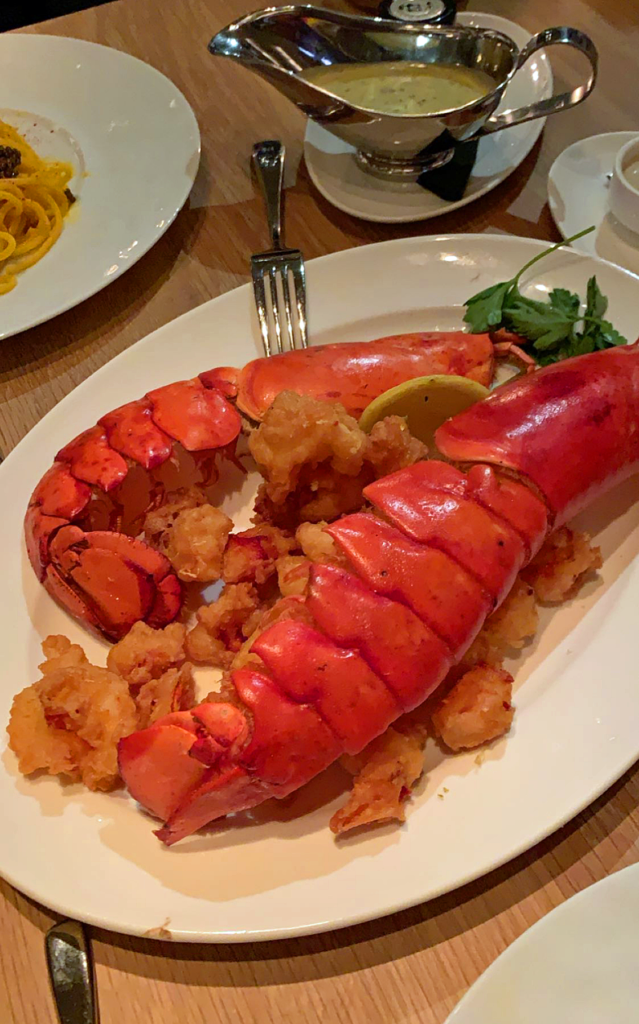
The whole “crab & lobster” category would be a wash if not for itslast offering: Maine lobster tempura. Ironically, this was the dish you weremost sure you would dislike. For frying lobster, you would think, has noutility outside of a carnival setting. Yet, when provided a product thatpossesses an exceptional texture and little assertive flavor of its own, whynot double down on that texture and find some other way of flavoring themystery meat inside. I guess you should call it the “McNugget” approach, butappearances be damned, it really works. The plate arrives at the table withfifteen to twenty morsels of tempura-fried lobster hiding in and around anoverturned shell. They are small- to medium-sized so that one never needs tothe pieces in half (or shove more than one at a time into his or her piehole).The outer layer of batter is thin, perfectly crisp, and all-enveloping in itscoating. It yields instantly to that familiar, gushing chew of the lobster’s owntexture. Accompanying sauces of ponzu and dijonnaise provide a more powerfulflavor than the lime-soy glaze served alongside the coal-roasted variety.Principally, they flavor the breading and impart a more measured amount ofsweetness by the time one’s teeth strike the “meat” inside. As with all yourfavorite dishes at RPM Seafood to this point, the lobster tempura is bothtechnically impressive and playful. It works against any image of “celebrity”or stuffiness the RPM restaurants have cultivated over the past decade.
Moving on, the “delicately grilled” section forms the exact midpointof the menu. In many respects, it represents the restaurant’s ethos—that is,the celebration of a lighter, purer kind of cooking compared to the heavypastas and steaks being slung at the other RPMs. The text under the section’stitle states that the items therein are “grilled over glowing embers ofcharcoal and served with single-estate Iliada olive oil, fire-kissed tomatoes,and Amalfi lemon salt.” That certainly sounds romantic, but you must sadlyadmit that you have neglected the dishes in this category. The offeringsinclude Ora King salmon, giant tiger prawns, and Spanish branzino. (AMediterranean dorade was offered on the opening menu but has since been discontinued,perhaps only seasonally). While you did not find the olive oil that accompaniedyour warm bite of prawns particularly impressive, its flavor was in no wayoverbearing and, rather, served to enrich the texture of the small halves oftail. Here, you think, it serves much of the same purpose: staying out of theway so that the “product” can be the star of the plate. The lemon salt, surely,works to the same effect while those fire-kissed tomatoes are a bit moreassertive (but hardly going to interfere with what else is going on). It shouldbe noted that the seafood which appears under the “delicately grilled” categorydoes not appear elsewhere on the menu. Thus, the section is very much aconscious decision to earmark those ingredients which merit the leastobfuscation and serve them as simply as possible. That, as you stated before,is right in line with the establishment’s mission, and it allows other, morecolorful categories of seafood preparations to shine all the more.
Speaking of which, you think the “globally-inspired” section of themenu is the strongest of all. It’s the place where the kitchen can take itsproduct and draw on any number of techniques or ingredients to tell a story.For example, the “char crusted otoro belly” is very much an ode to Japan.Ginger and wasabi root the dish in the omakase tradition, while the tuna’slight sear and an accompanying wedge of lime bring it back towards a Westernstyle. Thus, it’s a good compromise for people who would otherwise hesitate totry raw fish. As with the tuna carpaccio, you do not think LEYE has access toany particularly exceptional fish. However, it’s a serviceable dish and adecent portion size that pushes the kitchen out of its comfort zone. The doversole “fish & chips,” in contrast, is a surefire winner. While you havenever seen dover sole—that most regal of fine dining fish—fried before, itapparently exists as a more expensive option at some of the chippies in London.For good reason too. The flesh holds well to the slightly-puffed batter andpossesses a luscious, meaty, and altogether homogenous texture that is simplythe “tops” when it comes to fish and chips. The “chips” themselves are nothingshort of a revelation and better than the fries served at RPM Seafood, RPMSteak, or (even!) Bavette’s. In terms of size, they are somewhere between“thick-cut” and “wedge,” but they possesses a golden brown crispness and a deepcrunch that could only come from a double- or triple-cooking process. The dishonly errs in not offering malt vinegar or ketchup as condiments. Nonetheless,the sauce gribiche (sort of an herbed mayo) is tasty enough (if a bitone-note), and the ketchup can be furnished by your server upon request.
The “spicy miso black cod” is somewhat of a classic preparation for thefish and, you think, one of the most pleasingly umami dishes that can be madewith any fish. Broskey does not err in his execution, which is incrediblybuttery in texture and pleasing nutty—even sweet—in its flavor. A garnish ofcrispy kale forms a fitting contrast, while a sprinkling of sesame seeds servesto underline the savory notes you so enjoy. Forget “delicately grilled”—this isthe simplest and most satisfying preparation of fish on the entire menu. Theremaining three dishes in the “globally-inspired” section—which you have yet totry—generally seem strong. The “RPM bouillabaisse” clocks in as the category’smost expensive item at $52. Other than a saffron broth and a garlic rouille, itis hard to discern what seafood features in the classic fish stew. You think ahalf lobster is likely to appear and that the broth, most of all, really needsto impress if the restaurant is going to trot out the “RPM” signature label. A“charcoal-grilled black bass” seems the most adventurous of the fishpreparations, featuring Moroccan spices and a salsa verde. The “roasted JohnDory,” in contrast, is a fish that’s generally hard to like and, one imagines,receives little help from the heirloom carrots listed with it. “Champagne” islisted as the only other constituent of the dish after the carrots (and you’dbe surprised if its presence was anything more than mere gimmick).
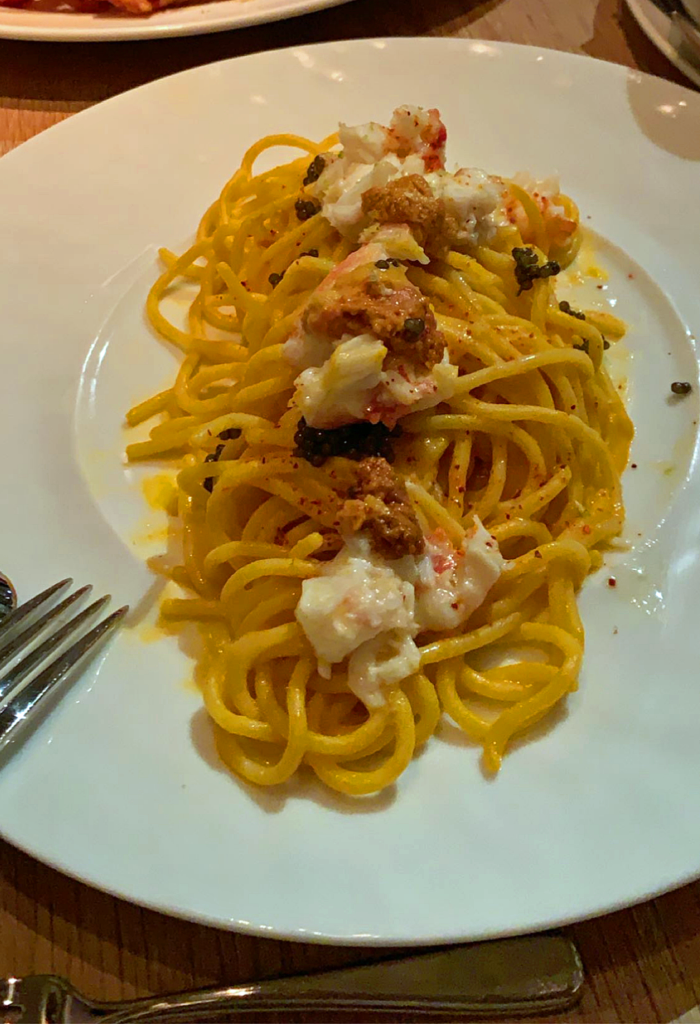
Having toured RPM Seafood’s four categories of seafood entrées, themenu now turns towards dishes that are a bit more substantial. First, forming atransitional section, are the “signature pastas.” While the “Amalfi lemonlinguine” aims to satisfy cravings for seafood pasta (sans the seafood), the“rigatoni Bolognese” is more of a consolation for those who demand a bit ofmeat with their noodles. Neither dish, if you are being quite honest, hascaught your eye, for Pizzeria Portofino, downstairs, has never really won youover with its expanded array of pasta selections. RPM Italian remains, in yourmind, the rightful domain for the restaurant group’s attempts at pasta. Still,you could not help yourself from ordering the “golden spaghettini” on each ofyour visits. This dish, which carries more than double the price tag of the othertwo pastas, begs comparison to Gibson Italia’s highly-touted gold-extrudedpasta. However, the “gold” here is not in reference to any piece of equipmentbut, rather, to its luxurious components. The first rendition of the dish, asfar as you can remember, featured orange-tinged strands of spaghettini withking crab, caviar, and uni in an uni butter sauce. Now, in its current form,the dish has ditched the crab and caviar to pair noodles, uni, and uni buttersauce with slices of black truffle. You were a bigger fan of the former dish,which struck you as a more decadent (but ultimately well-designed) take on the“seafood pasta.” The textures and flavors were a bit muddled, yes, but the allamounted, at least, to a transcendent level of seafood-tinged fattiness.Shoehorning black truffles into the mix strikes you as odd, both because theyalready appear on the menu (atop those excellent soft-scrambled eggs) andhardly ever are paired with seafood. Caviar (roe) and sea urchin (roe) are farmore kindred spirits, but, perhaps, LEYE saw little point in keeping caviar onthe menu only to use it in this one dish. Neither version of the dish, mindyou, is worth its $49 price, but you will give the kitchen some points forcreativity, for bringing more luxury ingredients into the fold with some senseof boldness and finesse.
After the pasta section, the menu really starts to fall apart.“Signature cuts”? Of steak? Of the same Japanese beef served at RPM Steak andthe same Bistecca Fiorentina found at RPM Italian? Get out of here. Youhadn’t the slightest interest, across all of your visits, in trying the samecuts of meat prepared at the other RPM restaurants. Sure, it is probably a goodidea to put them there to appeal to the more carnivorous customers who foundthemselves at this, the “seafood” RPM, by mistake. But you cannot view thecategory as anything more than a “greatest hits” roadshow of meat that would belucky to meet the competent (yet unimpressive) standard set when being preparedin LEYE’s most steak-centric location. The prices are consistent acrosslocations—you’ll give them that—and it might be true that the “Cape Grimgrass-fed NY strip” has never been served at another RPM location. But, insofaras RPM Steak’s steak did not impress on your last visit, you do not see anyreason to order the beef here. The same, too, can be said for most of the itemsunder the “classics” category, like a “Yacht Club” burger, a double-cut lambchop, and an “RPM Surf & Turf” (which pairs a petit filet with abroiled—rather than coal-roasted—half tail of lobster).
A “heritage chicken paillard” and a “veal chop milanese” are bothrelatively novel creations for the RPM kitchens to take on, but they hardlyreinvent the wheel. Instead, like all the items in these final two categories,the dishes represent a peace offering towards those who read “Seafood” on themenu and think “by golly, I have quite the hankering for animal flesh.” On thesame note, sides like “hen of the woods” mushrooms, “sea salt fries,” “greenbeans amandine,” “spicy broccolini,” “whipped potatoes,” and “wood-roastedcauliflower” would be right at home on the other RPMs’ menus without anybodyblinking an eye. The “Greek lemon potatoes,” however, are a triumph. They’reapproximately the same as the “chips” that accompany the “dover sole fish &chips” but, seemingly, possess an even greater golden-brown crunch and theadded tang of citrus. Don’t waste your time with the “sea salt fries” if theseare being offered. The “ratatouille,” too, deserves some credit fororiginality. Yet, while the dish is tasty, it amounts to little more than avegetable casserole (missing, in your opinion, the depth of flavor thatcharacterizes the signature stew).
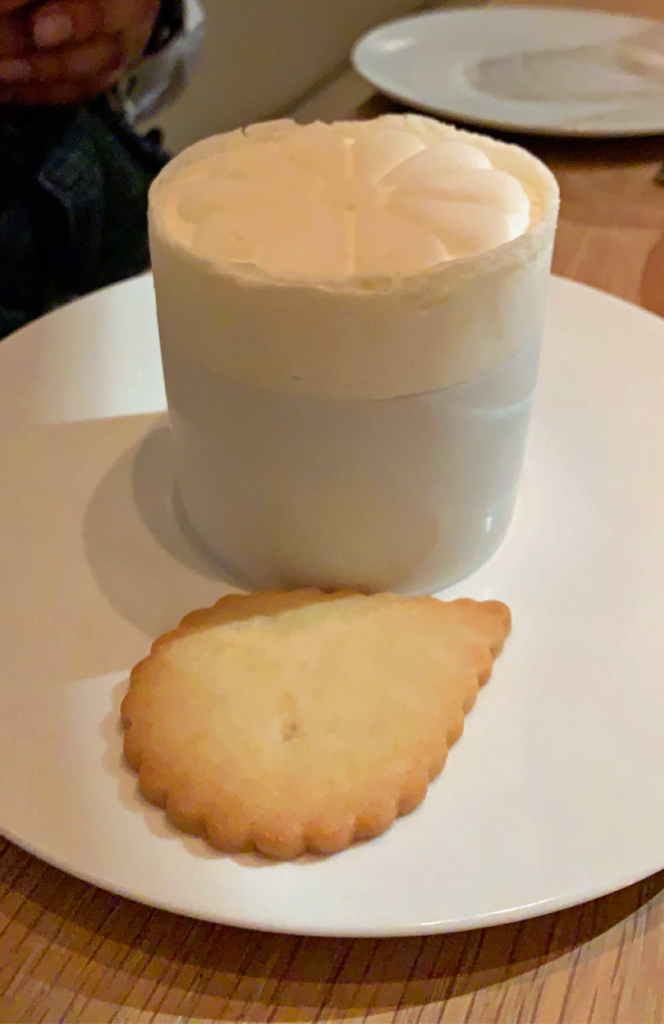
Those who read your review of RPM Steak will remember that dessert, ofall things, is where LEYE really outclasses its competitors. If the group’stendency is to get a bit lost in its salesmanship (when it comes to the qualityof the restaurants’ seafood and steer), then the dessert menu represents nothingless than total supplication to the whims of its most sweet-toothed customers.Simply put, the selection does not try too hard to impress but, rather, to satisfy.Yes, the frozen soufflés—which have only been added to the menu in the pastmonth—are a bit daintier, but the lemon and raspberry renditions both surpassany form of sorbet. They are ethereally light, not too cold, and benefit fromcontrasting textures of shortbread, meringue, fruit jam, and curd. The crèmebrûlée, too, is a bit lighter and aims to satisfy less-sweetly-inclinedcustomers with a garnish of citrus granita (swapped for Fabbri cherries in theRPM Steak rendition) and candied pistachio. In contrast, the warm “vanillasugar doughnuts” dipped in a raspberry and lemon curd are pure pleasure. You donot mind seeing them pulled from RPM Steak’s list (where they are instead filledwith Boston cream) at all, particularly because the switch to a citricflavoring is thematically appropriate. Likewise, the “RPM cheesecake” that, atthe steakhouse, comes topped with blueberry compote, here boasts some tartcherries and a dollop of cinnamon cream.
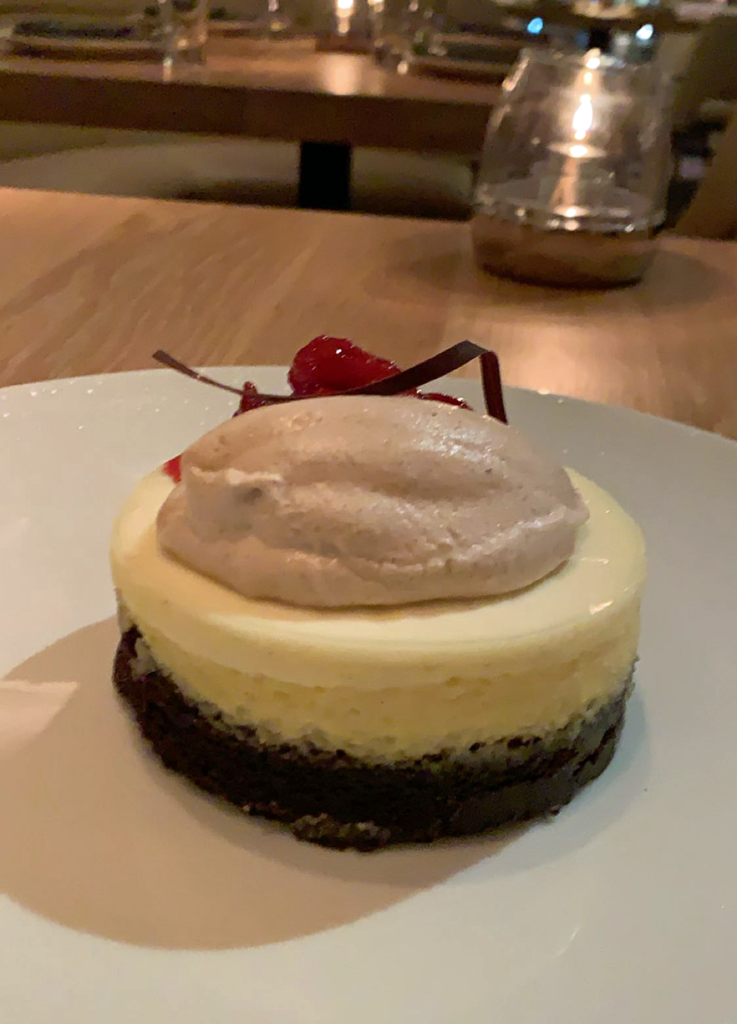
The “banana cream Napoleon” has seemed fairly popular among patrons,being composed of a layer of crispy phyllo dough, the titular cream, more phyllodough, more cream, and more dough with sliced bananas and warm caramel. Thethree-tiered design (with middle “bun”) is reminiscent, in some sense, of a BigMac. Yet, this may be the most texturally nuanced of all the desserts, and thepastry chef pulls off the crisp-soft-chewy combination without a hitch. The“platinum coconut cake,” priced at $15, is also one of the most populardesserts. It represents RPM Seafood’s answer to RPM Steak’s “14K chocolatecake” (also priced at $15, which is a dollar or two more than most of the otheroptions). While the latter features a dusting of gold leaf on top of arectangular cake, the former makes use of equally luminescent platinum leaf.Structurally, the coconut cake comes hidden under a layer of icing with an arrayof circular meringue “petals” thrusting outward from every direction. It looksa bit like a pine cone, but the visual flourish serves the dual purpose ofcapturing all the platinum like a snowswept tree. In this respect, thegaudiness of the garnish can be forgiven, for it works to lend the dish athematic effect that goes beyond “look at this precious metal.” The cake itselfis a devil’s food, and, while you think that forces the coconut flavor into thebackground, it ensures customers will feel the cake is rich and chocolateyenough to stomach the platinum surcharge.
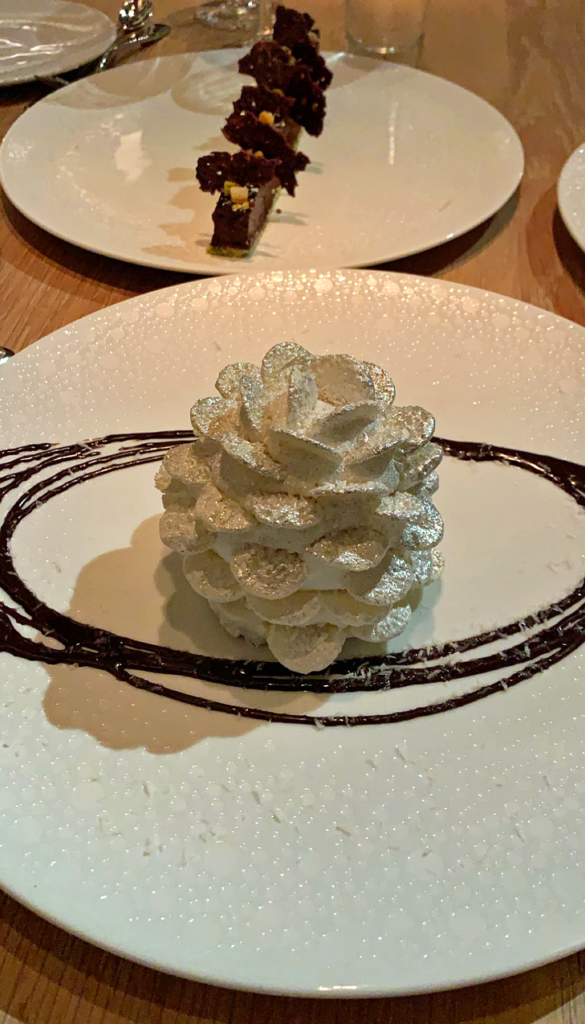
Background: the slender but deeply flavored chocolate mousse torte.
Those craving chocolate will find, still, a few further options on thedessert menu. There’s the “hazelnut praline,” a sort of hard-shell “Ho Ho”looking thing whose interior contains, rather than cake and cream, a crunchy,nutty sweetness married with warm, oozing caramel. The “chocolate moussetorte,” similarly, seeks to itch that chocolate craving a bit more directlythan the coconut cake. The impossibly slender, rectangular piece spans theradius of the plate; however, each and every bite strikes you with the depthand power of its dark chocolate. The cake is helped by a bit of candied orangeand a sprinkling of pistachio, which provide just enough of a contrast tounlock further nuances in the chocolate. For your money, the torte easilyoutclasses the coconut cake in its complexity, making the latter seem a fairlysimple, inoffensive dessert that is merely made “desirable” by its platinumdressing. The “peanut butter pie” is the newest addition to RPM Seafood’sdessert selection, and, while you have yet to try it, the form looks similar tothe cheesecake. That is, a smooth filling sits atop a brittle crust (made fromchocolate rather than graham cracker) with a topping of whipped cream andcrushed peanuts. All in all, a rather comprehensive and pleasing assortment ofoptions that look to indulge rather than impress. An ethos, you think, that theRPM restaurants needs to better apply to the savory sections of their menus.
Therein, you think, lies the problem with RPM Seafood. The group, as awhole, has never sought to be the best in the “Italian” or “steakhouse” diningcategories. Streamlined? Sure. Accessible? Of course. But, rather than reinventtheir respective genres, the restaurants contented themselves with beingshining examples of those forms. They are friendly places—more than willing toput the “training wheels” on for inexperienced guests or, rather, to step asideand let the high rollers take command of the wine list. Yet, friendly as theyare, the RPMs are institutional restaurants first and foremost. They arevehicles for the restaurant group—as it stretches its tentacles ever-furtherthroughout the city—and its celebrity proprietors—as they stretch their shredof fame as far as it will go. Though a chef once made up the three-lettertriumvirate, his presence was hopelessly lost in the shuffle. He brought“trends” (like expensive beef, oh goodie) to the city, yet the menu was neverchef-driven. Nor is the menu at RPM Seafood today. Some rays of creativityshine through, but so do just as many “greatest hits” offerings straight off ofthe other restaurants’ menus. As always, the chef’s task is to lay a foundationof formidable, classic dishes sure to please the vast majority of customerswith only the slightest dusting exotic ingredients and preparations. Thehospitality staff, too, are there to keep everything moving at a pleasant pace.As is always the case with LEYE, they are mechanically precise and unerringlypersonable. Yet they miss that bit of magic—that bit of flourish—that makes thebest of the best hospitality professionals flourish.
Ultimately, RPM Seafood amounts to the same old song and dance in a gorgeous space. It’s the “springtime RPM,” the “summertime RPM,” the “yacht club RPM.” It’s an opportunity to anchor LEYE’s event space in the heart of downtown and supplement it by way of a thriving “new” concept. Yet, even if the ingredients are new, the palette of preparations strikes you as similar, as “safe,” ultimately, in the way you just described. While, at Beacon Tavern, it seemed like chef Broskey punched above his weight, here—at RPM Seafood—it seems like he has one arm tied behind his back. A few bright spots shine through—showing a capable combination of comfort food and finesse—but the customer base seems to want one of two things: uber-healthy seafood or a fat steak. Classic canonical techniques like salt-baking or deboning tableside are nowhere to be found. RPM Seafood is not a celebration of “the world’s best fish and seafood.” It’s a celebration for Chicago’s see-and-be-seen wannabe glitterati. You would recommend that any interested parties pick a few tempting bottles off of the wine list, indulge in the most decadent dishes, and move on to support local businesses that better push the boundaries of American cuisine forward.


